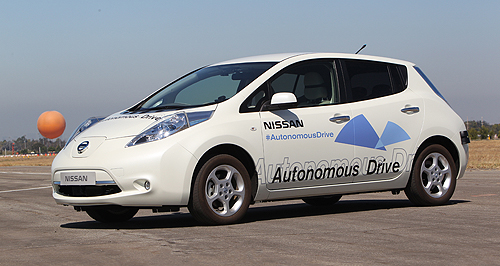AI not the answer for driverless cars: Ghosn
BY TUNG NGUYEN | 13th Jun 2017

Giving a talk at the University of Sydney on the future of the auto industry, Mr Ghosn admitted artificial intelligence (AI)-controlled cars are safer than human drivers, but still had their limitations.
“You have a lot of theories saying, and I know a lot of very interesting debates saying, ‘Artificial intelligence is going to take over the world and human beings are not going to be able to work and robots are going to replace (us)’, it doesn’t stand for one minute of analysis,” he said.
“The reason for this is very simple, artificial intelligence, computers, they follow their instructions in a certain way.”Mr Ghosn revealed the computer-controlled vehicle’s inability to break the rules hardcoded into them resulted in scenarios where such cars became stuck, resulting in the need for human intervention.
“If it’s a red light, it stops,” he said. “If it’s speed limit, it’s going to respect it. If you have a continuous line, it’s going to stop, so we find ourselves in that situation because we spend a lot of time making simulation while the car has only, ‘don’t go, don’t go, don’t go’, so it stops.
“So if (you don’t) put a human intelligence behind it, the car is going to be stuck there, it’s not going to move.”Mr Ghosn likened the situation to NASA’s use of robotics and automated systems, saying: “NASA has the same problem, by the way… there are many cases where you need to go back to the headquarters of NASA to tell the computer what to do because no matter how much calculation power you have, there are a lot of situations where the machine cannot decide – the unexpected, the unplanned, the unperceivable.
“A human mind has to be somewhere here behind for all the situations that cannot be planned and there are multiple situations like this,” he said.
“So what we found copying NASA is for the autonomous car, we have a control tower where, for the cases like this when the car is stuck, it automatically sends a signal, ‘I’m stuck’, and then the guy who is (in) the control tower can see through the cameras of the car what’s the situation and then give instruction and then the car, in this case, brake the line, pass on the red, etc.”Mr Ghosn also noted the different driving behaviours of various other countries, including his native Brazil where red lights are frequently ignored after dark due to safety concerns, and India where drivers routinely travel around roundabouts the wrong way.
“We have to solve these problems because if you put a car in a situation like this there’s an accident, technology is going to be accused of being dangerous,” he said.
“So we have to solve these problems of inconsistency of respect of the rules with autonomous cars. It’s a serious problem and a serious challenge for us.”However, Mr Ghosn reiterated that these problems would be overcome in the next five years before driverless technology hits the mainstream.
“Between the moment that you have a prototype which works and the moment you’re going to mass-market a technology like this, it takes four to five years,” he said.
“For the moment, we solved 99 per cent of the problem, but the last one per cent is obviously the most difficult. These are the extreme cases which can destroy the technology that you need to really bring a very solid solution before you mass-market.
“We’re not talking about technology 20 years down the road, we’re talking about the technology which is being fine-tuned now and it’s going to be available in the cars to come within the next three to four years.”